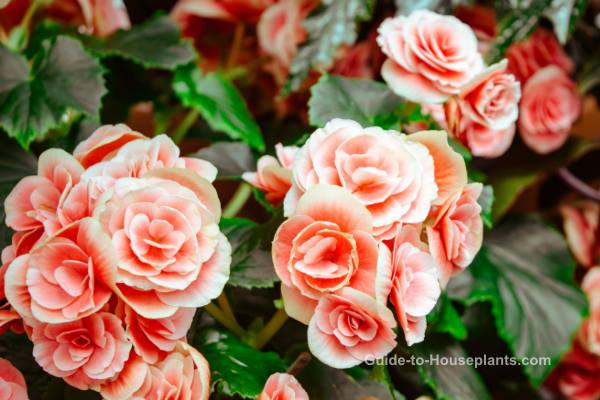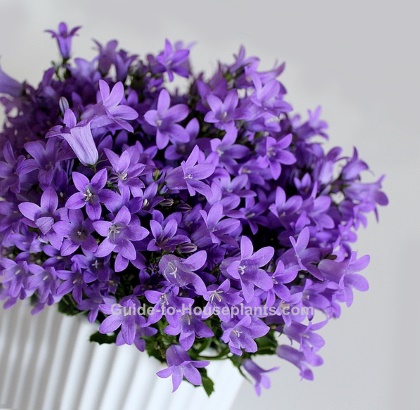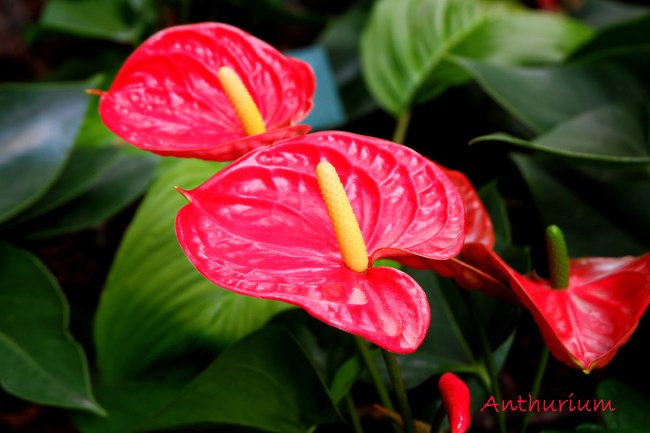Areca Palm Tree
Long, feathery fronds of areca palm tree grow in a canopy shape, lending an air of elegance and sophistication to a room.
Fortunately for us, this tropical native (known botanically as Dypsis lutescens) is perfectly content to live in a container indoors.
Discover how much water, fertilizer and humidity it wants year-round, when to repot, plus solutions and tips to head off any houseplant problems.
 Give areca palm a whirl -- and add a tropical vacay vibe to any room.
Give areca palm a whirl -- and add a tropical vacay vibe to any room.Not all palms adapt well to home conditions, but this Madagascar native does beautifully indoors. Give areca palm tree bright, indirect sunlight and you'll enjoy it for many years.
Repotting Areca Palm: When, Why and How-tos
Don't be in a hurry to repot your palm.
Your new palm. Did you just bring it home? Palms are stressed from a change in light and humidity. Give it a month or so to adjust to its new environment. If you want to cover up a plain nursery pot, slip it into a cachepot -- a decorative container without drainage holes. I put river rocks in the bottom of cachepots to keep the inner pot above the drainage water.
Keep it crowded. Crowding its roots will help to limit this large palm's size, which is a good thing because you're growing it indoors. Repotting areca palm tree only necessary every 3 years, and only when its roots are severely crowded.
Repot in spring. The best time to repot is in spring, when this palm begins its most vigorous time of growth.
- Use a pot only 2 inches bigger than the old one, because a too-large pot will hold too much water and may lead to root rot. It's a good idea to use a pot with a drainage hole to prevent soggy soil.
- Keep the palm at the same depth as it was in the old pot; planting it too deeply will likely cause the stems to rot, killing the plant.
- Don't spread out the roots because this palm's roots are brittle and break easily. Try to keep the root ball intact as much as possible.
- Gently tamp the potting medium around the root ball.
- Water thoroughly to ensure all the roots are wet.
When your palm reaches 3 ft (90 cm) or taller, you can top-dress it instead.
How to top-dress a houseplant: Remove the top 2-3 inches of soil and replace with fresh soil every couple years. Take care not to harm any roots near the surface.
Where to Buy Areca Palm Tree
You'll find areca palms for sale in nurseries, florist's shops and garden centers. This is one of the most popular palms for growing indoors. If you can't find one locally, you'll find them for sale online. Look for the botanical name Dypsis lutescens (also known as Chrysalidocarpus lutescens) to be sure you're getting this palm. Common names include Areca Palm and Butterfly Palm.
You'll find Areca Palm for sale from Costa Farms, a company I trust. Guide-to-Houseplants.com is a participant in their affiliate program offered by Amazon. If you make a purchase after following this link, I may earn a commission.
 Areca palm adapts beautifully to growing indoors and is a long-lived houseplant.
Areca palm adapts beautifully to growing indoors and is a long-lived houseplant.Areca Palm Tree Problems, Solutions and Answers
Palm tree too big? Although slow growing, areca palm tree can reach 20-30 ft in its native habitat. Indoors, this tree will slowly reach about 8 ft (2.4 m). You can keep it smaller by pruning off the tallest frond or two. You can also limit its growth by confining its roots in a smallish pot.
Brown leaf tips? Dry air or dry soil is probably the culprit. Water regularly and boost the humidity around your palm tree. You can trim off brown leaf tips with scissors if you don't like the way they look.
Brown fronds? Older fronds will turn brown. You can cut them off near the soil level.
Something bugging your palm? Dry air may attract spider mites to areca palm leaves. Wiping off leaves with a damp cloth will do double-duty, removing dust and keeping those pests away. Raising the humidity can also help. Treat any infestation right away to prevent pests from moving on to your other houseplants.
Is areca palm poisonous? No. It's non-toxic and safe for a home with children, cats and dogs.
Areca Palm Tree Care
Origin: Madagascar
Height: About 6-8 ft (1.8 - 2.4 m) tall when grown indoors in a container
Light: Bright (indirect) light year-round. Give your plant a quarter turn every few days to expose all sides to light for even growth. If you move the palm to your patio for the summer, keep it shaded from full sun. Hot, direct sunlight may turn leaves yellowish-green.
Water: Water thoroughly to wet all the roots, then allow soil to dry slightly before watering again. Water less in winter when growth has slowed. Use filtered or distilled water because tap water may contain fluoride, chlorine and other chemicals that can damage palms. When watering, avoid getting the base of the palm wet to prevent rot. Use a container with drainage holes, and fast-draining potting mix to prevent soggy soil.
Humidity: Average room (around 40-50% relative humidity). Indoor air can become extremely dry in the winter. The most efficient way to increase humidity is with a cool-mist room humidifier. Your tropical plants will love it, and it's good for you, too.
Temperature: 70-85°F/21-27°C days; 55-60°F/13-16°C nights. Cold blasts from doorways as well as drafts from heat/AC vents can harm this tropical native.
Soil: Mix 2 parts peat moss-based potting mix and 1 horticultural sand
Fertilizer: Most indoor plants like a steady diet of liquid plant food, but not palms. Palms are slow-growing, especially indoors, and aren't heavy feeders. Feed monthly spring and summer with a fertilizer specially made for palms, such as Jobe's Organic granular fertilizer; it contains the micro-nutrients this palm needs to keep it lush and green. Yellow spots or streaks indicate a lack of potassium or magnesium.
Propagation: Sow seeds in spring, barely covering the seeds with soil. Keep them warm (75-80°F/24-27°C) and moist. Areca palm seeds can take up to 6 weeks to germinate, so be patient.


